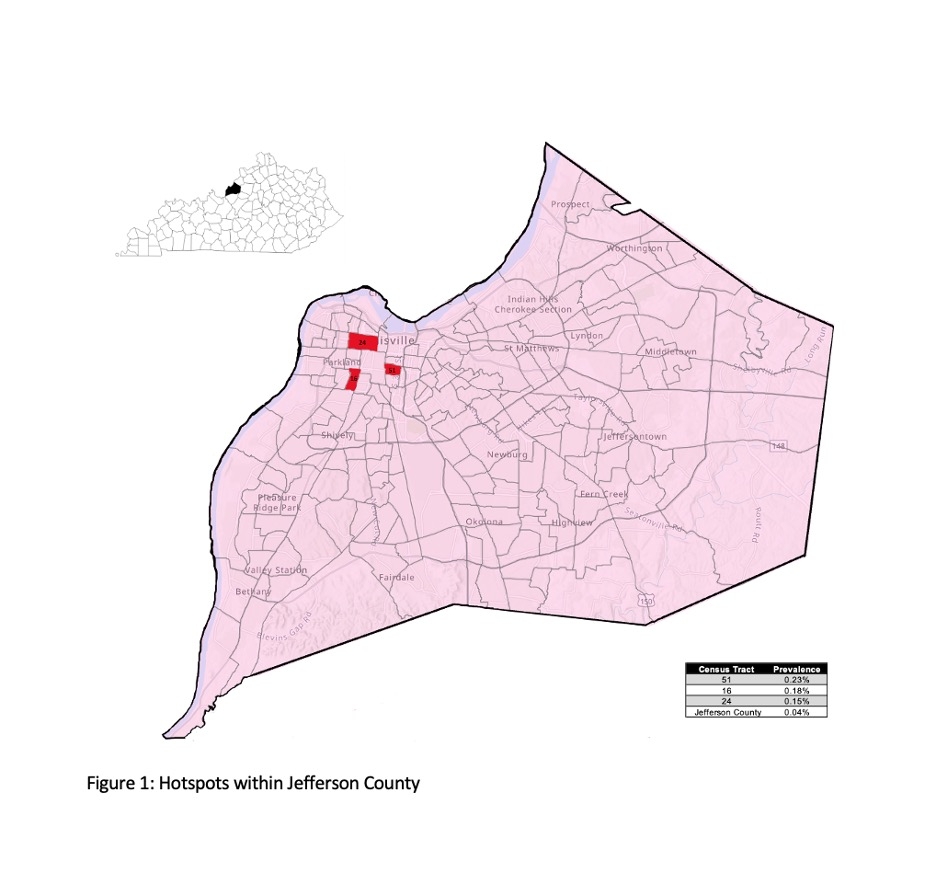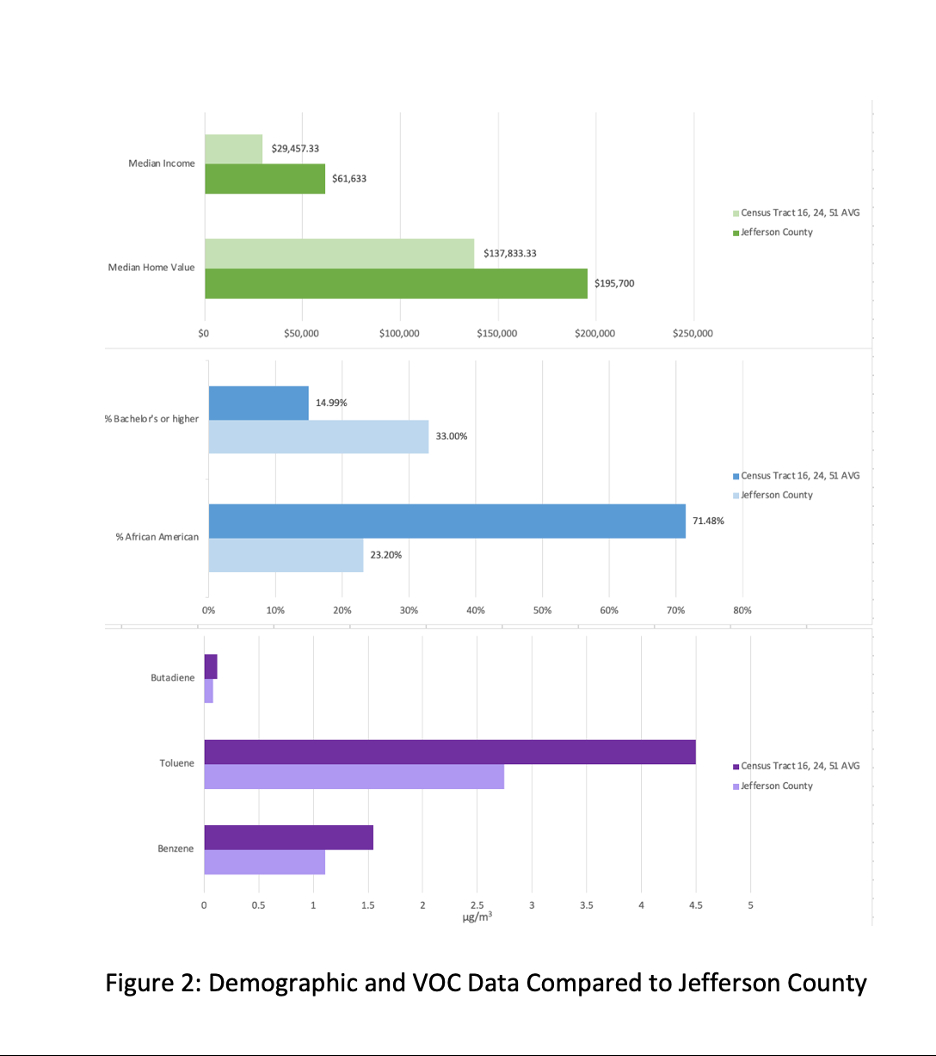Back to 2024 Abstracts
DOES THE ENVIRONMENT HAVE A ROLE IN HIGHER COLORECTAL CANCER RATES WITHIN AN URBAN AREA WITH HIGH RACIAL AND SOCIOECONOMIC DISPARITIES?
Allie Jin
*, Rochelle Holm, Ted Smith, Natalie DuPre, Sandy Kavalukas
University of Louisville, Louisville, KY
Background:Colorectal cancer (CRC) is both the 3
rd most common and 3
rd most deadly cancer in the US. There are reported lower incidence rates of CRC in urban settings compared to rural areas, thought to be due to access to screening. However, clinicians noticed a higher incidence in patients living in an urban low socioeconomic neighborhood, with pre-test probability centered on the location of these patients next to an industrialized area that may have elevated amounts of ambient toxins, specifically volatile organic compounds (VOCs) released from factories. The objective of this study is to analyze the distribution of CRC in this area and consider markers of socioeconomic status and how this may correlate with community environmental data. Our hypothesis is that a range of socioeconomic disparities predispose patients to living in an environment that may lead to an elevated incidence of CRC.
Methods:A retrospective study at a tertiary care center analyzed CRC patients from 2021-2023 (IRB# 23.0319). Residential addresses were mapped using GEOIDs obtained from them and linked to neighborhood characteristics. Median household income and housing prices, race, and educational attainment data were sourced from 2020 United States Census Data. Concentrations of environmental toxins were taken from the 2014 National Scale Air Toxics Assessment. Data from the Kentucky Cancer Database (KCDB) were obtained to compare these rates with the rest of the state.
Results:Mapping GEOIDs for CRC identified significant hotspots, notably Census Tracts 16, 24, and 51. These areas exhibited both higher incidence rates and localized clusters of cases. Corresponding data from the Kentucky Cancer Database (KCDB) revealed a significantly elevated crude rate of CRC (17.1 per 10,000) in these zip codes (95% CI: 14.8-15.3). Regarding demographic and socioeconomic status, compared to the County averages, these census tracts had: lower median household incomes ($61,633 vs $29,457), different racial distributions (23.2% vs 71.5% African American), lower completion of bachelor's degrees (33% vs 15%), and lower median home values ($195,000 vs $137,833). Regarding toxin exposure, ambient air in these census tracts had higher levels of VOCs: specifically, 54.77% higher benzene (1.55 µg/m
3 vs 1.11 µg/m
3), 63.57% higher toluene (4.49 µg/m
3 vs 2.75µg/m
3), and 45.45% higher butadiene (0.12 µg/m
3 vs 0.08 µg/m
3).
Conclusion:We identified CRC hotspots in a metropolitan area that reflects lower socioeconomic status and a higher population of African Americans, coupled with higher exposure to VOCs. These findings underscore the complex interplay of environmental factors and socioeconomic determinants when considering strategies to address health disparities and CRC incidence.


Back to 2024 Abstracts

